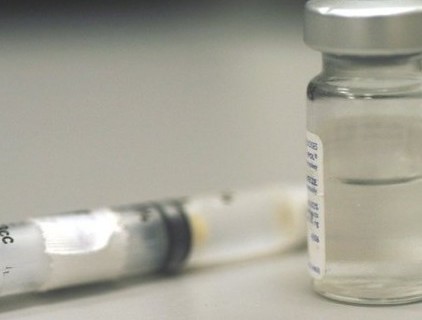
A First – Cell Culture Based Seasonal Influenza Vaccine Approved by the FDA
In recent months we have provided in depth coverage on new cell culture based vaccine technologies, media supplements and manufacturing equipment. Vaccine related topics continue to be highly searched at The Cell Culture Dish. In celebration of the Food and Drug Administration’s (FDA) approval of the first cell culture based seasonal influenza vaccine, we wanted to provide a brief overview of the use of cell culture for vaccine manufacturing and a review of our cell culture coverage that includes new technologies, best practices and key cell culture recommendations.
On November 20, 2012, FDA announced that it approved the use of Flucelvax manufactured by Novartis to prevent seasonal flu in people over age 18. This approval was the first for a cell culture-based seasonal influenza vaccine in the United States. Instead of using the traditional chicken egg production method, Novartis propagates the virus in Madin Darby Canine Kidney (MDCK) cells. There are many advantages to using a cell culture-based manufacturing system for vaccines – it is quicker to manufacture, efficiently scalable and offers more control over the manufacturing environment.
In addition to manufacturing benefits, clinical trials have proven that cell culture-based vaccines are just as safe and efficacious as their egg-based counterparts. According to a study published in 2010 in Clinical Infectious Diseases, titled “Clinical Efficacy of Cell Culture—Derived and Egg-Derived Inactivated Subunit Influenza Vaccines in Healthy Adults,” OptiFlu™ (Novartis’ cell culture based influenza vaccine approved in Europe) was just as effective as traditional egg based flu vaccine. The study conducted over the 2007-2008 flu season compared efficacy of OptiFlu™(manufactured using MDCK cells), Agrippal™ (egg-derived trivalent inactivated vaccine) and placebo in 11,400 healthy adults under 50 years of age from the U.S., Finland and Poland. Compared to placebo, OptiFlu™ was 84% effective against the flu strains contained in the vaccine and Agrippal™ was 78% effective. In both vaccines the side effects were similar.
So what’s next for cell culture based vaccines?
In addition to the opportunity for more cell culture based vaccine approvals, there are also improvements that could be made with respect to the manufacturing of cell culture based vaccines. The optimization of cell culture media is one area where improvements can be made in vaccine manufacturing. The removal of animal products and creation of a robust, defined and customizable media, which maximizes output per cell and earlier harvest times, would be ideal.
While CHO manufacturing has made continual improvements over the years, including advances in media formulations to remove fetal bovine serum (FBS), vaccine manufacturing has maintained many of the same practices including the use of animal products in media. One challenge is that manufacturing practices for many current vaccines were developed decades ago, before the rise of serum-free media technology. Cell lines used for vaccine manufacture (Vero, MDCK) were not amenable to being grown without FBS and cell health and productivity was often compromised when serum was removed.
There is also an opportunity to improve virus production by using bioreactors. Bioreactors can provide cells the optimum environment, which can lead to an increase in productivity. While many vaccines are still manufactured using static culture or roller bottles, several studies have shown that manufacturing can be greatly improved by employing bioreactors. Bioreactors can be used when cells are in suspension or adherent by employing another technology – microcarriers. Microcarriers enable more cells per milliliter of culture by expanding the surface area for cell proliferation. More cells in culture increases overall titer yield. With an increase in the use of stirred-tank bioreactors, microcarrier innovations have been necessary to allow adherent cells to be cultured in these conditions. In addition, the use of microcarriers allow manufacturers to increase the number of cells that can be cultured in one tank enabling more efficient large-scale production and permitting the use of greater than 1,000 liter bioreactors.
Another strategy that can reduce cost and speed availability of vaccines is the use of adjuvants. While adjuvants do not improve yield, they allow vaccines to be effective with less virus antigen used per vaccine dose. Depending on the adjuvant and virus, antigen requirements with an adjuvant can be as low as one fourth the amount needed without the adjuvant present. For vaccines where the virus is very expensive to make or doesn’t elicit a strong immune response these new adjuvants could be the key to making new vaccines possible. In the case of a pandemic, adjuvants allow more people to have access much faster. During the 2009 H1N1 pandemic, the majority of influenza vaccines in Europe and most of the rest of the world contained this new class of adjuvant. While the United States opted not to include adjuvants for fear of public rejection of the vaccine, adjuvants are becoming more commonplace in the rest of the world.
These ideas and others have been discussed in recent blog posts including:
- “Cell Culture Based Optiflu on List of Top Selling Flu Vaccines”
- “New Vaccines Coming Soon to a Doctor’s Office Near You”
- “Strategies for Improving Viral Yield in Vaccine Manufacturing”
- “Improving Media to Increase Virus Yield in Vaccine Production”
- “Utilizing Bioreactors to Increase Virus Production in Vaccine Manufacturing”
- “Manufacturing Strategies for Improving Viral Yield and Lowering Production Cost”
- “First Cell Culture Based Vaccine Plant in the United States”
- “So What’s the Status of Manufacturing Human Vaccines in Cell Culture”
- “Is Egg Based Vaccine Manufacturing on its Way Out?”
- “Cell Culture Flu Vaccine Approved in Europe – Is the United States Next?”